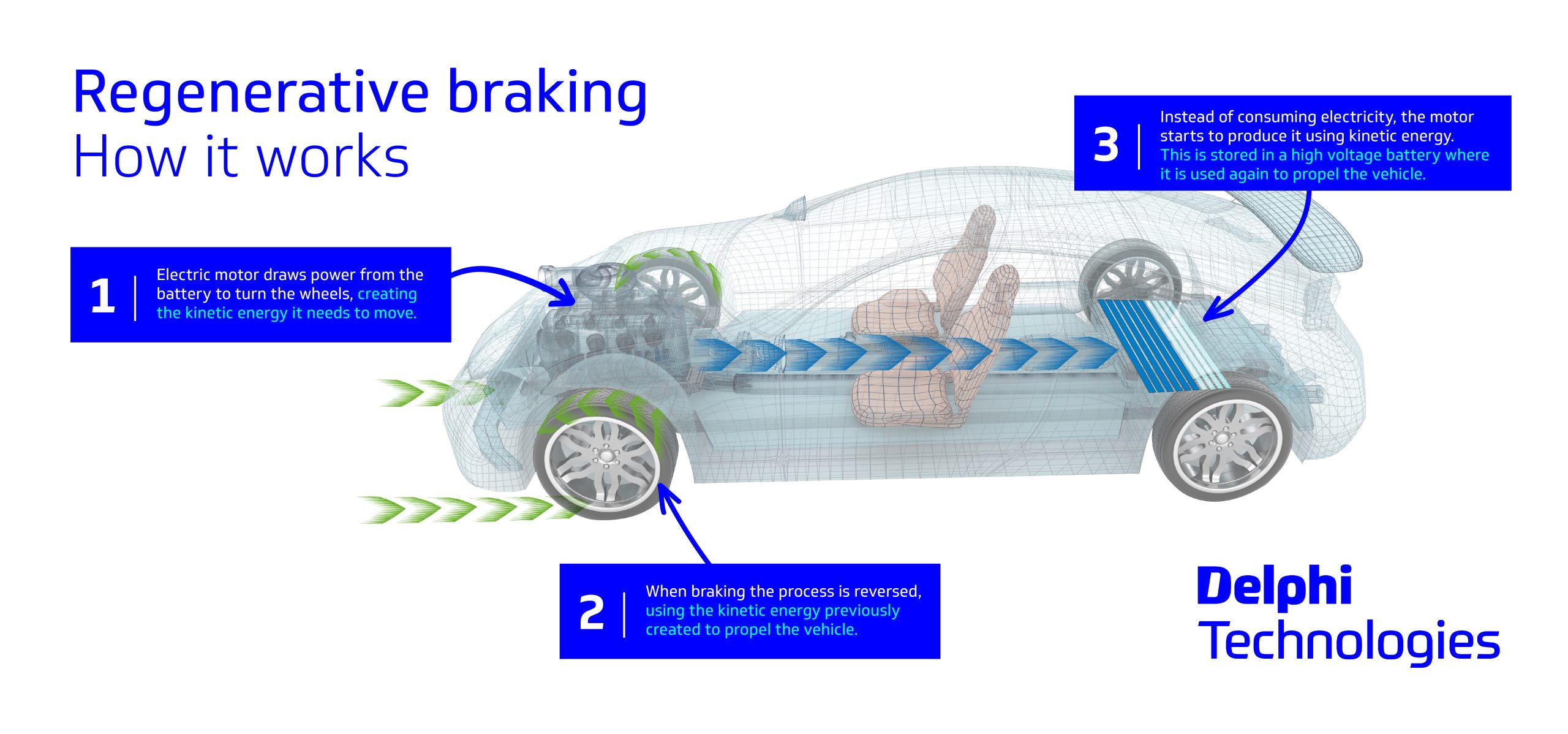Regenerative braking on electric vehicles: working principles and benefits of application

Regenerative braking is a mechanism employed in electric vehicles (EVs) that allows them to recover and store energy while decelerating or braking. It captures the kinetic energy from braking and converts it into the electrical power that charges the vehicle’s high voltage battery. Regenerative braking also slows the car down, which assists the use of traditional brakes.
Working Principles:

Kinetic Energy Conversion: When an EV decelerates or brakes, the electric motor functions as a generator instead of consuming energy. The kinetic energy of the vehicle is converted into electrical energy.
Generative Braking System Activation: As the driver applies the brakes or reduces acceleration, the regenerative braking system activates. This system engages the electric motor to act as a generator, converting the rotational energy of the wheels into electrical energy.
Electrical Energy Storage: The electrical energy generated during regenerative braking is sent to the battery pack for storage. It increases the state of charge of the battery and can be used later to power the vehicle or other onboard systems.
Benefits of Regenerative Braking:
As you can imagine, capturing and reusing more energy from braking has real benefits for the efficiency of your vehicle. Plus, it means less wear and tear on your brakes.
Energy Efficiency: Regenerative braking improves the overall energy efficiency of EVs by recovering and reusing energy that would otherwise be wasted as heat during traditional friction-based braking. This allows the vehicle to travel farther on a single charge.
Extended Range: By capturing and storing energy during braking, regenerative braking helps extend the range of electric vehicles. The recovered energy is available for use when accelerating or driving at higher speeds, reducing the reliance on the battery alone.
Increased Battery Life: Regenerative braking reduces the strain on the battery by replenishing it with energy during deceleration. This can help prolong the lifespan of the battery pack in EVs.
Improved Braking Performance: Regenerative braking can enhance the braking performance of EVs, as it combines the regenerative system with traditional friction-based braking. This allows for precise control over deceleration and improved responsiveness.
Reduced Wear and Tear: Traditional brake pads and rotors in conventional vehicles wear out over time and require maintenance. With regenerative braking, the reliance on friction-based braking is reduced, resulting in less wear and tear on the brake components of EVs.
Overall, regenerative braking is a key feature in electric vehicles that contributes to their energy efficiency, extended range, battery life, and improved braking performance. It plays a crucial role in maximizing the benefits of electric propulsion technology and making EVs more sustainable and practical for everyday use. The VF8 series of vehicles operating in the US is equipped with the most advanced Regenerative braking system. It provides a smooth, stable, economical and safe driving experience for all passengers in the car.
Source: IOP Conference Series: Materials Science and Engineering, Volume 1271
Bạn cần đăng nhập để tương tác với nội dung này: Đăng nhập.


